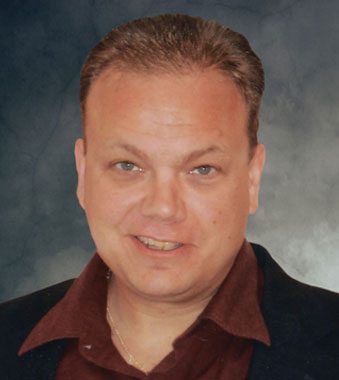
On June 10, I turned 40 years old.
Much has changed since 1972, both in my own life as well as in the world.
Forty years ago, President Richard Nixon presided over America.
We were still engaged in the Vietnam War.
The median price of a home was $27,600. The average car cost $3,853, and the average income was $11,859.
In the world of popular entertainment, The Godfather won the Oscar Award for Best Picture and All in the Family was the top rated television show. The latter, though, had some competition: Sanford and Son, M*A*S*H, and The Waltons were just some of the iconic programs that premiered in 1972. In fact, up until this juncture TV Guide would insert a “C” after those listings that aired in color. This was the first year that it dropped the “C” and instead began identifying those shows that were still in black and white (yes, there were still programs that were filmed in black and white!).
There may have been more color television programs than black and white by the time I was born, but it wouldn’t be for another few years that I would know this. We had a single television, a floor contraption with four wooden legs — and it was a black-and-white model. We moved out of the apartment in which I was born when I was three years old. It wasn’t too much longer after this, I believe, when my parents purchased a color set.
Our TV, like the sets in the homes of everyone who we would visit, had “rabbit ears”; no one had cable. For that matter, no one that I can recall even had a remote control. There were two dials on the set that you had no option but to manipulate by hand — the one was for “VHF,” the other for “UHF.”
The former consisted of the three networks — ABC, CBC, and NBC — as well as some other stations. Trenton, New Jersey, where I was born and raised, is in between the metropolises of Philadelphia, to the south, and New York, to the north. This meant that in addition to channels 6 (ABC Philadelphia) and 7 (ABC New York City), 2 (CBS New York City) and 10 (CBS Philadelphia), and 3 and 4 (NBC, Philadelphia and New York, respectively), we had available to us channels 5 (WNEW New York, now Fox); 9 (WOR New York, now MyNetwork TV); 11 (WPIX, now the CW) and 12 and 13 (both PBS).
On UHF, there were channels 17, 29, 48, and 52 (Philadelphia stations all of them).
When I was about seven or so, my father borrowed from a co-worker Pong, the first home video system. It offered two games, if I am not mistaken: “Squash” and “Tennis.” What a surreal experience I remember it being to watch on our television screen these bars and blips whose movement my family and I were able to control. By today’s standards, the graphics were abysmally poor. I haven’t a doubt that this, coupled with the sluggish rate at which the games unfolded, would bore to tears my three year-old son, to say nothing of an adolescent “gamer” of today.
When I was a child, I was an avid consumer of superhero comics. I bought these magazines whenever I could. I have comics with 30-cent covers. I don’t remember buying them when they were that price (my father must’ve bought them for me). I do, however, recollect, and clearly, purchasing them when they were 50 cents each.
Today, the standard comic book is between three and four dollars.
Also, it was possible when I was a child to find my genre of choice at your average convenience store. This has long since ceased to have been the case. The majority of people in 2012 who buy comics don’t just buy them; they collect them. And the majority of these are not children. They are adults. Thus, comics — or “graphic novels,” as they are now called — are sold by and large at either comic book stores or at chain bookstores (such as Barnes & Noble).
Superhero comics and Pong weren’t the only forms of entertainment. We would also “play records.” We had an old record player that my sister and I would not infrequently dust off and use. Around Christmas it would come in handy when we wanted to hear the old classic carols, yes, but it was really a blast when my two cousins would spend the night and they would bring along their Star Wars album! One morning in particular I can vividly recall my mother serving us pancakes as we sat around the table listening to it. This was a treat, for although Star Wars was first released in 1977, I didn’t first see it until it was rereleased the following year. My cousins had seen it by the time we listened to this album, but I had not.
This is another regard in which things have changed. During the days when no one I knew had cable or VCRs, and phenomena such as the home computer with its option to “download,” DVD players, and the like weren’t even heard of, it was not uncommon for movies, at least the successful films, to be re-released — usually on multiple occasions.
My child, like virtually every child in the year 2012, has it made. With our DVR, we can record all of his shows and he can watch them as often as he likes — commercial free. He also has a ton of DVDs. Still, there is a ritual from yesteryear of which today’s kids are deprived, a ritual for which those of us who grew up practicing it each week would have gladly sacrificed our lives: Saturday morning cartoons.
The three main networks — ABC, CBS, and NBC — began showing cartoons at 8:00 a.m. If you wanted to see them — and you most definitely did — then you had no alternative but to make sure that you were up bright and early with the set on by 8:00. After all, as I said, there were no recorders. My parents would sleep, so my sister and I would pour ourselves several bowls of cereal and get comfortable in front of the TV. Between 8:00 and 12 noon we would alternate between networks, every so often arguing over whose turn it was to change the channel.
The neighborhood park I take my son to bears few similarities to the neighborhood park of my youth. The playground on which my son runs around is covered with mulch and grass, and its sliding boards are made of plastic. In contrast, the playground in which I spent countless hours as a child consisted of cast iron “monkey bars” and a three-story high metal sliding board. The ground itself was all asphalt. During the summer months, children — myself included — would situate themselves in milk crates and slide down the sliding board and onto the asphalt. What a rush!
I used to ride my bike all over our neighborhood — and not infrequently beyond it. Yet unlike the children of today who look as if they load up with every piece of protective gear except a bullet proof vest before they hop on their bicycles, helmets or knee pads designed for this purpose were nonexistent. Nor did anyone think to suggest them when kids suspended their riding in favor of “jumping” some makeshift ramp or other.
Contemporary agents of child protective services would be apoplectic if they knew that neither my parents nor any other adults, that I can remember, would require us kids to wear seatbelts. My maternal grandfather always had a Cadillac, Buick, or Lincoln — i.e. a monstrous-sized vehicle (and these were the largest of cars in the era of large cars). These automobiles contained bench seats with armrests in the center. On our trips from Trenton to New York to visit his mother and siblings, my sister and I would fight over who would sit on the armrest in the front seat between my grandparents.
On top of all of this, my grandfather smoked cigars in the car!
I never thought a thing of this, for my father would regularly smoke cigarettes around us in both the car as well as in our home. In fact, I doubt that few people would have thought much of this, for smoking was commonplace. The malls had ashtrays, and people routinely smoked as they did their grocery shopping.
My wife is a kindergarten teacher at a public elementary school. To hear her (as well as legions of others) tell it, the state of public school education has changed profoundly in the nearly 30 years since I attended. At her school, teachers are not permitted to so much as mark a student’s work in red ink; the ink must be lavender. As for disciplining unruly pupils, forget it. Teachers can’t put their hands on students, whether to pull them out of line, place them in the corner, etc.
When I was a student, all papers were indeed marked in red ink, and the teacher would routinely call out our scores. Disobedient students would be forced to stand in the corner, and sometimes they would be made to spend time in a dark coatroom. Some teachers wouldn’t hesitate to grab the disorderly by their arms and yank them into shape.
Another significant difference between my wife’s public school and the one that I attended is that the latter would annually hold Christmas — not, as is the case with the former, Winter — concerts. Not only would we call this much anticipated event a “Christmas” concert; we would as well sing explicitly religious songs, such as “Angels We Have Heard on High.” No Jewish “carols,” much less “Kwanza” hymns, were on the roster.
So many changes have I witnessed over my 40 years on this Earth. Forty years from now it will be 2052. If I am still alive, I will be an old man of 80. Lord only knows what changes will befall my life, and the country, over this span. But if they are anything at all in magnitude like those that have transpired between 1972 and the present, they promise to be dramatic — and, from our point in time, probably even inconceivable.



